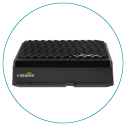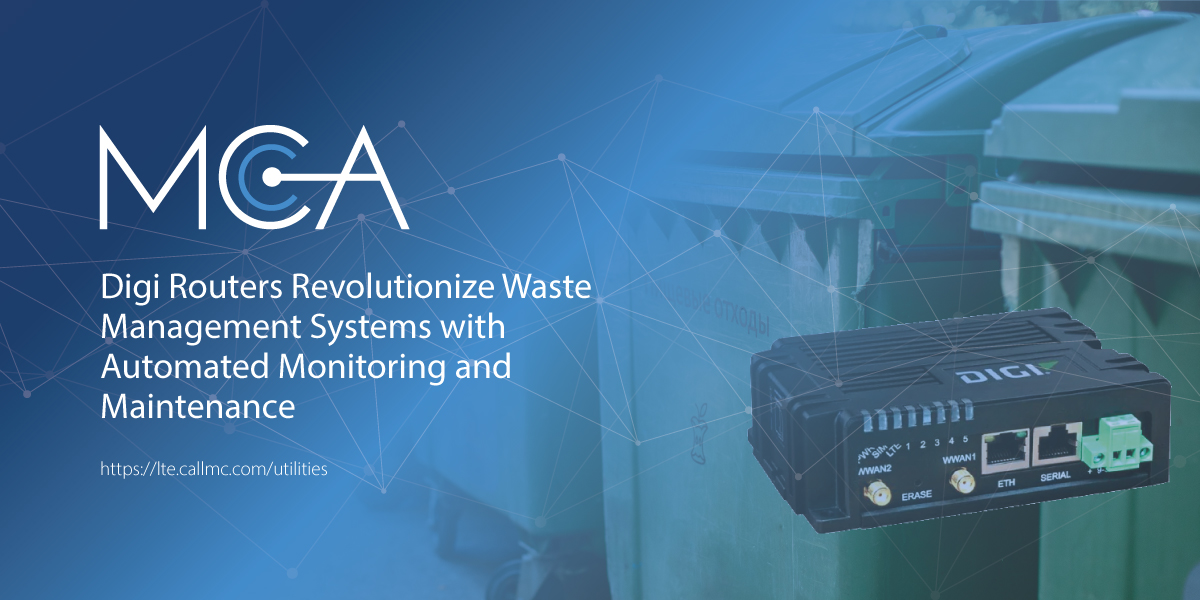Challenges Manufacturing Needs To Overcome
The manufacturing industry is undergoing significant transformation as it progresses towards Industry 4.0.
Cradlepoint's Private Networks and Industry Connect solutions are playing a crucial role in providing the necessary connectivity to enhance manufacturing, making it more agile, secure, reliable, and intelligent. However, the manufacturing sector is also confronted with numerous challenges. In this report, we will delve into these challenges and illustrate how high-performance private cellular networks, enabling smart manufacturing, can serve as solutions to overcome them.
Manufacturing plays a significant role in the global economy, constituting 16% of the world's GDP. The World Bank has further broken down the value of each sector's contribution to manufacturing, with the following four major segments representing their respective percentages of manufacturing's contribution to GDP:
- Machinery and transport equipment: 31%
- Chemicals: 14%
- Food, beverages, and tobacco: 5%
- Textiles and clothing: 5%
The remaining 45% falls into the "Other" category, indicating the diverse nature of manufacturing beyond these primary segments.
However, with such a massive presence across so many industries, it’s inevitable that there will be challenges across various segments of the manufacturing industry as a whole.

Supply Chain Disruption
In addition to internal challenges, the manufacturing sector has faced a slew of external difficulties. The COVID-19 pandemic has resulted in border closures and lockdowns, disrupting supply chains and local manufacturing operations. Furthermore, trade tensions and tariffs have compelled a shift toward local production and shorter supply chains. A 2019 survey conducted by the US-China Business Council revealed that over 80% of U.S. companies experienced adverse impacts from trade tensions in the previous year.
Embracing Modernization
The significance of modern manufacturing skills cannot be overstated, especially as manufacturers upgrade their existing brownfield facilities, which constitute the majority of factories today. These facilities are encumbered with aging machinery and assets that may take up to two decades to depreciate fully, making companies hesitant to replace them. Consequently, the prevalence of outdated machinery poses significant integration challenges when implementing new solutions and can create data silos that are difficult to consolidate.
Data Security Imperative
Facilities in the process of upgrading their infrastructure and transitioning to smart factories face an additional hurdle: data security. The data generated by factories is of immense value, and it is susceptible to serious risks, necessitating the security offered by a private or 'on-premises' network. According to a 2019 survey conducted by Capgemini, more than one in five manufacturers experienced cyberattacks on their smart manufacturing initiatives during that year.
Overcoming Fixed Asset Constraints
Most factories have implemented wired connectivity to automate and digitally transform their facilities. However, this fixed asset poses a substantial obstacle when it comes to reconfiguring the facility, whether for creating custom products or transitioning to new product lines. The ability to adapt swiftly and maintain flexibility is essential for factories to compete in today's increasingly demanding markets effectively.
Powering Connectivity with Private LTE Networks (PLTE)
Smart manufacturing demands a high degree of flexibility in automation, which, in turn, relies heavily on robust wireless connectivity. This connectivity serves as the catalyst for transforming the manufacturing industry.
Within the manufacturing industry, there is a solution that holds the potential to address a multitude of challenges. Manufacturers are increasingly recognizing the value of implementing private networks to enhance the agility of their business operations.
This is achieved by introducing high-speed connectivity, low latency, and robust performance in environments with high device density. The combination of substantial data throughput and minimal latency can provide businesses with the competitive edge needed to outpace their rivals.
Private networks operating on 4G LTE and 5G technology play a pivotal role in ushering in the era of smart manufacturing.
What Is A Private Network?
A private LTE network - also known as a private cellular network - is a network deployed on an organization's premises exclusively for its use. In manufacturing, this typically encompasses areas such as factory shop floors, warehouses, and loading docks.
Automation in Manufacturing
An overwhelming majority of manufacturing executives, about 86%, firmly believe that smart manufacturing initiatives will play a pivotal role in driving competitiveness over the next five years.
Opportunities for Automation
The manufacturing landscape still presents significant opportunities for automation, as a substantial portion of manufacturing tasks continue to be executed manually, as depicted in the chart below:
- Decision making (19%)
- Administrative tasks (31%)
- Manual work (33%)
- Identifying and evaluating information (32%)
- Complex and technical activities (37%)
- Information processing (47%)
This data underscores the vast scope for automating various aspects of the manufacturing process, indicating the potential for increased efficiency and competitiveness through smart manufacturing initiatives.
Comprehensive Smart Manufacturing
The concept of smart manufacturing encompasses a broad array of technologies with diverse applications throughout the manufacturing process. These applications span from product concept and design to production, optimization, and quality assurance. To fully embrace smart manufacturing, every stage of the process must be interconnected and digitally accessible.
Role of Autonomous Robotics
Autonomous robotics play a pivotal role in smart manufacturing by enabling real-time, closed-loop machine-to-machine (M2M) communications. These robots are capable of collaborating to complete tasks efficiently. Enhanced video services facilitate three-dimensional, video-driven interactions between robots and humans, with more advanced applications optimizing these interactions through the use of digital twins of the facility.
Augmented Reality Revolution
Augmented reality is gaining prominence in the manufacturing industry as it significantly enhances training and provides support for workers on the job. It enables tasks to be virtually generated, offering real-life experience that can be applied in practice. Augmented reality reduces training time for complex tasks, minimizes operator errors, and enables remote assistance, making it an increasingly attractive technology for manufacturers.
The Importance of Dedicated Wireless Connectivity
Achieving success with these use cases hinges on having dedicated wireless connectivity, as traditional cabling makes rapid facility reconfiguration challenging and mobility virtually impossible. A private wireless network is the solution, offering high-speed connectivity to autonomous robots and other assets as they move within or across the production floor. It also facilitates asset tracking through location data and is particularly valuable for connecting equipment that is challenging to access and wire.
Choosing the Right Spectrum
Manufacturers must make a crucial decision regarding the type of wireless connectivity that best suits their needs, starting with the choice between licensed and unlicensed spectrum. Governments regulate the Licensed spectrum, ensuring that service providers and organizations can use dedicated spectrum without concerns about bandwidth interference. On the other hand, unlicensed spectrum is open for anyone to use but generally has limited range. In the context of smart manufacturing enabled through a private network, licensed spectrum is generally more suitable.
Licensed spectrum offers better reliability, enhanced performance, and broader coverage compared to unlicensed spectrum. A 5G-ready private cellular network is ideal for smart manufacturing connectivity due to its low latency, robust security, high-speed capabilities, and substantial throughput.
Overcoming Smart Manufacturing Hurdles
Embarking on the Industry 4.0 digitalization journey can present challenges for many manufacturers. One obstacle is the question of why change a production system that is already functioning. The business case for such a transition must be compelling enough to convince senior managers of its value, despite potential investments and disruptions. With their efficiency and flexibility, private cellular networks make a strong case, especially in addressing productivity and customization concerns within the industry.
Additionally, there are numerous possible use cases to implement, requiring management to identify the initial use case to deploy and justify the investment in private cellular technology. Lastly, organizations must plan the deployment process for smart manufacturing and consider how integration among various deployed use cases will take place.
Use Cases
Autonomous Mobile Robots (AMR)
Autonomous Mobile Robots (AMRs) offer many advantages, foremost among them being the enhancement of worker safety by effortlessly navigating environments fraught with risks to human workers. Moreover, AMRs exhibit superior material-handling precision, potentially reducing typical scrap by up to 30%, bolsters financial performance and contributes positively to the environment.

From a financial perspective, these benefits translate to an annual steady-state net value equivalent to approximately 1.5% of the revenue. The return on investment in the fifth year reaches an impressive 50%, with a payback period of fewer than four years.
Facilitating unrestricted AMR mobility for inspections and material handling within the manufacturing setting necessitates efficient data processing, management, and robust, low-latency, and secure real-time data transfer capabilities. This level of connectivity can be reliably achieved through the implementation of a private cellular network. By harnessing the power of 5G technology, AMRs can seamlessly traverse the factory floor without the need for magnetic guidance strips. With 5G's pinpoint positional accuracy, these robots can maneuver freely even in densely populated environments with numerous connected devices.
Collaborative Robots
Collaborative robots, commonly referred to as cobots, operate alongside human operators to execute various manufacturing tasks, including operational work, drilling, assembly, and automated quality inspections of products on the production line. This approach enables the automatic inspection of all components rather than just relying on sample-based inspections. By employing cobots, factories can achieve comprehensive part inspections without extending the time required, ultimately enhancing overall product quality and customer satisfaction.
Cobots bring significant benefits to the workplace, notably improving worker safety and creating a more ergonomic environment. They excel at swiftly and accurately performing tasks that may pose risks to human workers.
To enable the flexibility and adaptability required for cobots to move seamlessly within the facility and serve multiple purposes, wireless connectivity to the facility network is essential. A 5G-ready private cellular network can provide the reliable and low-latency connection that cobots demand. Even in environments crowded with hundreds or thousands of connected devices, a private cellular network remains steadfast in delivering fast and stable connectivity, as it is designed to support high device density settings.
Investing in cobots yields a substantial return, equivalent to approximately 1.4% of revenue as yearly steady-state net value. In year five, the return on investment reaches an impressive 44%, with a payback period of fewer than four years.
Augmented Reality (AR)
Augmented Reality (AR) holds significant potential for enhancing quality inspection and diagnosis in smart manufacturing, addressing critical challenges in this domain.
AR technology can revolutionize quality inspections by providing visual aids that reduce the risk of human error and minimize the time spent in uncomfortable positions. Personnel can access geo-referenced 3D CAD models by overlaying visualizations, combining various data formats like CAD models, OGC 3D tiles, glTF models, and point clouds for precise visual analytics.
AR devices enable instant support and measurement, benefiting technicians, maintenance workers, and operators across the facility. Remote experts can visualize instructions swiftly, aiding on-site personnel from a distance. Additionally, AR has environmental benefits, as it can reduce the need for experts to travel to the site, cutting CO2 emissions by 50%..

To implement AR effectively in a manufacturing environment, reliable, highly secure, and high-throughput wireless data transfer capabilities are essential to handle the rich media and complex analysis required. Furthermore, wireless connectivity must provide accurate positioning and accommodate a high density of connected devices throughout the factory. Private cellular networks are well-suited to meet these requirements.
From a financial perspective, the benefits of AR quality inspections translate to a yearly steady-state net value equivalent to approximately 0.5% of revenue. The return on investment in AR in the fifth year stands at an impressive 68%, with a payback period of fewer than three years. This underscores the potential for AR to augment the bottom line in smart manufacturing.
Asset Condition Monitoring
Automated asset condition monitoring is a valuable tool for manufacturers, enabling them to optimize maintenance practices. This approach ensures that facilities neither suffer from downtime due to inadequate maintenance nor expend excessive time and resources on equipment upkeep. Asset condition monitoring effectively keeps equipment in good working order, preventing both excessive maintenance and premature part replacements. Consequently, manufacturers can reduce spare part requirements by 10% and minimize the amount of repetitive tasks performed by employees.

This intelligent tracking of machines enhances efficiency and promotes sustainability by extending the operational life of machinery.
To implement asset condition monitoring successfully, a facility must possess the capability to process and manage data efficiently. Cradlepoint provides a private network with high reliability, high speed, and high-throughput connectivity, essential for generating real-time data crucial for this monitoring process.
Digital Twins
A digital twin serves as a virtual model utilized in smart manufacturing to optimize specific aspects of operations. It offers a digital representation of the entire manufacturing process, allowing manufacturers to identify ways to streamline production without making physical changes. By utilizing 3D scanners, sensors, and lidar technology, digital twins can create a comprehensive virtual 3D map of all assets within a facility. Real-time data collection from these assets results in a fully integrated view throughout their lifecycle.
Digital twins provide manufacturers with a visual representation of the production environment's current and past states, enabling them to plan for future scenarios and make informed decisions. This technology offers valuable insights for process improvement and factory management, empowering manufacturers to enhance asset efficiency and productivity and reduce operational risks. As manufacturing increasingly embraces data-driven and digital approaches, the use of digital twins can lead to cost savings by optimizing production processes and facilitating efficient product line changes.
Effective utilization of digital twins requires the processing and management of massive volumes of data, including data from 3D mapping sensors, video streams, lidar, and thermal streams, often generated in real time.
In closing, a fully connected manufacturing environment has a high density of connected devices. In this context, a private cellular network in smart manufacturing proves indispensable for the real-time transfer of large data volumes, thanks to its high bandwidth. It ensures reliable connectivity even in environments with numerous connected devices. Given the collection of critical factory data from facility devices, the private and ultra-high security capabilities of 5G are essential for safeguarding this sensitive information.
About MCA and Our CNS Team
MCA is one of the largest and most trusted integrators in the United States, offering world-class voice, data, and security solutions that enhance the quality, safety, and productivity of customers, operations, and lives. More than 65,000 customers trust MCA to provide carefully researched solutions for a safe, secure, and more efficient workplace.
Our Cellular Networking Solutions (CNS) team (formerly known as USAT) is made up of certified experts in designing and deploying fixed and mobile wireless data connectivity solutions for public and private enterprises nationwide - complete with implementation, training, proof of concept (POC), system auditing, and on-site RF surveying services with optional engineering maintenance contracts.
Our extensive catalog of world-class routers, gateways, and software designed for remote monitoring and management in even the harshest environments allows us to deliver a full suite of reliable technologies capped with a service-first approach.
Share this Post


















